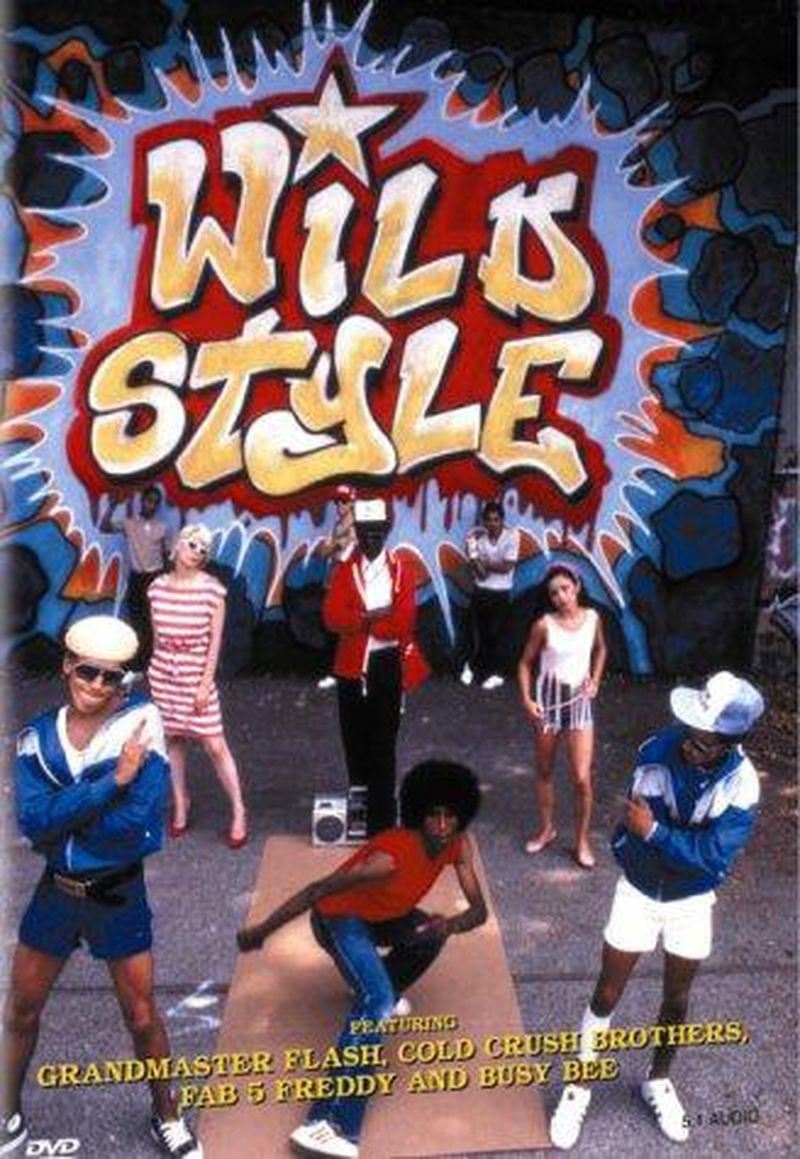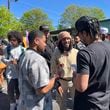On this date in 1973, an 18-year-old New York DJ and his emcee friend kickstarted the hip-hop genre.
» RELATED: Google marks anniversary of hip-hop with new interactive doodle
To commemorate the anniversary of hip-hop, Google debuted an interactive Google Doodle narrated by Fab 5 Freddy on its homepage, where you can play DJ as you scratch, mix your own breaks and earn trophies that unlock new facts about hip-hop.
Learn more about the Google Doodle here.
7 things to know about hip-hop’s history
Who invented hip-hop?
The birth of hip hop is believed to date back to Aug. 11, 1973, where DJ Kool Herc, real name Clive Campbell, and his friend hosted a back-to-school party in Bronx, New York.
» RELATED: Study: Hip-hop has fewer drug references than any other music genre
Eighteen-year-old Campbell and his friend Coke La Rock are often referred to as the fathers of hip-hop.
But according to NPR, "hip-hop has a number of fathers based on your understanding and knowledge of it." There's DJ Kool Herc and Afrika Bambaataa, the two South Bronx men known for throwing parties around town.
Bambaataa also led Universal Zulu Nation (called “Organization” in the 1970s), a hip-hop organization meant to unite all facets of the hip-hop culture.
DJ Kool Herc, Bambaataa and Grandmaster Flash are also recognized as hip-hop's founding "holy trinity," according to The Guardian.
And there’s also Pete DJ Jones, who was popular in the club scene.
In 1979, Sugarhill Gang rappers produced hip-hop's first commercially successful hit, "Rapper's Delight," according to Rap Genius.
Where and how did hip-hop begin?
The two Bronx kids decided to try something a little different while entertaining guests at their sister's back-to-school bash. According to NPR, Campbell threw his party inside the 1520 Sedgwick Avenue building in the South Bronx.
» RELATED: Photos: 'Legends of Southern Hip Hop' in concert
Instead of playing the songs in full, the Jamaican-American DJ isolated their instrumentals (or “breaks”), during which he noticed the crowd went wild.
Before this time, emcees typically introduced the DJ, the music and was responsible for hyping up the crowds with jokes and stories.
At the Aug. 11, 1973 bash, emcee Coke La Rock grabbed the microphone to do just that during Herc's innovative instrumental spins, adding words to the beats and with that, as Google wrote, hip-hop was born.
What are the four original elements of hip-hop culture?
Aside from DJYou ding and emceeing (or rapping), the other iconic original elements of the genre are graffiti and b-boying (or breakdancing).
RELATED: Photos: Hip-hop stars painted as 17th century figures
All four of these elements already existed in August 1973, but they were recognized as separate entities by the mainstream media, NPR reported.
What were hip-hop music’s original themes?
Much of pre-1980s “hip-hop,” often encompassed party themes, but social and political issues are often recognized as the main propellers of the birth and original direction of hip-hop, according to
To get an idea of original themes associated with the genre’s birth, it’s important to understand its historical context.
Hip-hop was birthed in black and Latino urban communities in New York, where street cultures were left isolated from white neighborhoods.
During this post-industrial pre-Reagan era, when political discourse was rampant in the U.S., the black and Latino residents in New York were written off as marginalized communities.
After President Ronald Reagan's election in 1981, conditions in those communities worsened, the Grio reported. Intensifying social issues related to police brutality, poverty, incarceration, oppression and unemployment became the prime influencers of hip-hop's birth.
» RELATED: Harvard senior from Atlanta submits rap album for thesis
One of the first hits in socially-conscious rap was Grandmaster Flash and the Furious Five’s “The Message,” released in 1982.
The track described the circumstances and stresses of inner city poverty.
Where did “hip-hop” get its name?
Keith "Cowboy" Wiggins, one of the emcees with Grandmaster Flash and the Furious Five, is credited in the hip-hop community with coining the term "hip-hop" (and it was by accident).
While teasing one of his friends who had just joined the U.S. Army, Wiggins used the phrase “hip-hop” to imitate sounds made by the cadence of marching soldiers.
» RELATED: 5 things to know about Atlanta rap group Migos
Somehow, some way, that term made its way to Wiggins’ stage performances.
Later, Afrika Bambaataa said DJ Lovebug Starski used the term hip-hop to describe the culture in its entirety.
The first time the term “hip-hop” made it to print newspapers
In January 1982, the "East Village Eye," a cultural magazine that focused on the New York neighborhood's art scene, published writer and filmmaker Michael Holman's interview with Afrika Bambaataa, a DJ from South Bronx.
Once, Holman went to one of Mambaataa’s Zulu Nation parties at the Bronx River Houses in 1982.
In an interview with the New York Times, Holman described the evening:
"Remember the New Romantic movement with pirates and Indians?" Mr. Holman recalled. "Malcolm was dressed like a pirate, with a puffy blouse and these big pantaloons. I thought, there was no way we could go up there with him dressed like that."
But they did.
"It was like something out of Joseph Conrad," Mr. Holman said. "There were like 1,000 kids rocking to Bambaataa, and the beats were thumping off the buildings. These were the kids who were too young to go to Studio 54 or a Luther Vandross concert. They were junior high school kids. And Bambaataa had a captive audience."
Around this time, Blondie had released “Rapture,” the second single from their 1980 LP, “Autoamerican.” The track featured Debbie Harry name-dropping hip-hop masters Fab 5 Freddy and DJ Grandmaster Flash.
The first hip-hop themed film
"Wild Style" (1983) is often regarded as the first hip-hop film.
Directed and produced by Charlie Ahearn, the film featured prominent hip-hop pioneers Busy Bee Starski, Fab 5 Freddy, Grandmaster Flash and the Cold Crush Brothers, all of whom play themselves in the motion picture.
» RELATED: DeKalb’s Tupac statue disappeared. Now a new one is finally coming.
Ahearn’s film was shot in New York’s South Bronx and Lower East Side neighborhoods, as well as around MTA subway yards.
It follows the life of a New York graffiti artist, but the movie’s popularity is primarily due to its hip-hop-star-studded cast.
Facts used for this story were collected from a variety of hip-hop sources, including Rap Genius, the Grio, Complex and more.
About the Author







